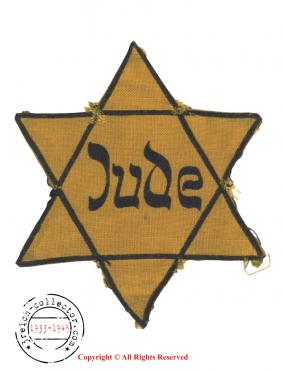Holocaust - Jewish - Very rare postcard from transit camp for Jewish in ghetto Izbica !
| Price: | $600.00 |
Very rare postcard from transit ghetto in Izbica / Wieprzem
Little history info because is very inetersting:
Created by the German ghetto transit an important part of infrastructure supporting the process of extermination of European Jews during World War II. Their essence was to focus the Jewish population of the Lublin District and from abroad, mainly from Germany, Austria, Slovakia and the Czech Republic, in a convenient location for future smooth running of Aktion "Reinhardt". Ghetto transition were located mainly in small towns in the Lublin region, near the railway lines connecting the three extermination camps: Belzec, Sobibor and Treblinka. In addition, these sites were populated by both local Jews, as well as displaced persons from other parts of Polish, which were incorporated into the Third Reich, mainly from the Land of Warta. The Germans themselves called this town as the "main focal points and handling," and they were actually only a stopover on the way to the final destruction.
The first and the largest transit ghetto created in Piaski and Izbica, lying on the road to Belzec, the first concentration camp, which was launched in March 1942. Third transitional ghetto was located in Rejowiec, near Chelm, located at the intersection of rail lines to Belzec and Sobibor. Another type of ghetto created, among other things, in Opole Lublin, Lubartów, Lukow, Kraśniczynie, Chelm, Deblin, Zamosc, Pulawy, Międzyrzec Podlaski, Siedliszcze, Wlodawa and Belzyce. The greatest concentration of transports of Jews to ghettos transit accounted for the first half of 1942. However, they were preceded by a selection in Lublin, where men fit for work were sent to Majdanek. On the other hand, since the middle of May 1942, most of the shipments getting longer without ghettos transition directly to extermination camps, mainly to Sobibor. Therefore, transit ghetto lost its raison d'être and ceased to exist last fall of 1942.
A characteristic feature of transit ghettos was confronting the locals, mostly poor and orthodox Jews Polish, with these newcomers, the Western, which stood assimilation and secularization. In addition, they were better dressed for at the local Jews presented themselves as wealthier. German, Austrian, Slovak and Czech Jews came here with the hope of finding a "peaceful life and decent work." This contrasted with the situation and knowledge of Polish Jews who were religious, the poor, and better knew the realities of occupation - have experienced terror, looting of property, life and functioning in the ghetto. The difference in the consciousness of Jews from various European countries was also seen during the deportation of Jews from the ghettos to the death camps. While Polish Jews at that time were looking for hiding places, unsuspecting westerners humbly performed the order to appear for transport issued by the Nazis. Thomas Blatt, a prewar resident of Izbica, commented as follows: "SS appeared in the Judenrat building and presented an ultimatum: all under fifteen and over fifty-five years of age must appear on the market or be shot. German and Austrian Jews living at that time in Izbica, was lost typical German discipline, respect and submission to authority. Polish Jews judged the situation with greater realism and tried to avoid their grim fate. Most of them realized that the "resettlement" meant death and undertook desperate attempts to hide itself. In contrast, German Jews, despite all the warnings from their Polish fellow, did not believe that they could disobey and do not execute orders of power. In a short time, they put up a rallying point. "






